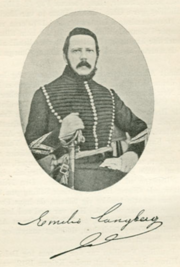
Scandinavia is a subregion of Northern Europe, with strong historical, cultural, and linguistic ties between its constituent peoples. Scandinavia most commonly refers to Denmark, Norway, and Sweden. It can sometimes also refer to the Scandinavian Peninsula. In English usage, Scandinavia is sometimes used as a synonym for Nordic countries. Iceland and the Faroe Islands are sometimes included in Scandinavia for their ethnolinguistic relations with Sweden, Norway and Denmark. While Finland differs from other Nordic countries in this respect, some authors call it Scandinavian due to its economic and cultural similarities.

The history of Sweden can be traced back to the melting of the Northern Polar Ice Caps. From as early as 12000 BC, humans have inhabited this area. Throughout the Stone Age, between 8000 BC and 6000 BC, early inhabitants used stone-crafting methods to make tools and weapons for hunting, gathering and fishing as means of survival. Written sources about Sweden before AD 1000 are rare and short, usually written by outsiders. It was not until the 14th century that longer historical texts were produced in Sweden. It is therefore usually accepted that Swedish recorded history, in contrast with pre-history, starts around the 11th century, when sources are common enough that they can be contrasted with each other.

The history of Norway has been influenced to an extraordinary degree by the terrain and the climate of the region. About 10,000 BC, following the retreat inland of the great ice sheets, the earliest inhabitants migrated north into the territory which is now Norway. They traveled steadily northwards along the coastal areas, warmed by the Gulf Stream. They were hunter-gatherers whose diet included seafood and game, particularly reindeer as staple foods. Between 5,000 BC and 4,000 BC the earliest agricultural settlements appeared around the Oslofjord. Gradually, between 1500 BC and 500 BC, agricultural settlements spread to the entire south Norway, while the inhabitants of the regions north of Trøndelag continued to hunt and fish.
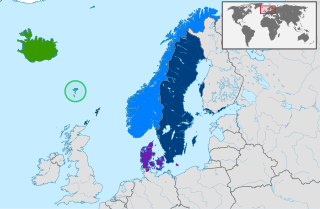
The North Germanic languages make up one of the three branches of the Germanic languages—a sub-family of the Indo-European languages—along with the West Germanic languages and the extinct East Germanic languages. The language group is also referred to as the Nordic languages, a direct translation of the most common term used among Danish, Faroese, Icelandic, Norwegian, and Swedish scholars and people.

The Norsemen were a North Germanic ethnolinguistic group of the Early Middle Ages, during which they spoke the Old Norse language. The language belongs to the North Germanic branch of the Indo-European languages and is the predecessor of the modern Germanic languages of Scandinavia. During the late eighth century, Scandinavians embarked on a large-scale expansion in all directions, giving rise to the Viking Age. In English-language scholarship since the 19th century, Norse seafaring traders, settlers and warriors have commonly been referred to as Vikings. Historians of Anglo-Saxon England distinguish between Norse Vikings (Norsemen) from Norway, who mainly invaded and occupied the islands north and north-west of Britain, as well as Ireland and western Britain, and Danish Vikings, who principally invaded and occupied eastern Britain.
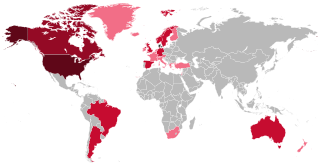
Danes are an ethnic group and nationality native to Denmark and a modern nation identified with the country of Denmark. This connection may be ancestral, legal, historical, or cultural.
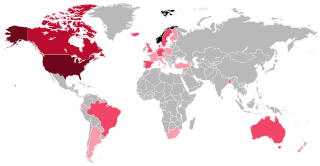
Norwegians are an ethnic group and nation native to Norway, where they form the vast majority of the population. They share a common culture and speak the Norwegian language. Norwegians are descended from the Norse of the Early Middle Ages who formed a unified Kingdom of Norway in the 9th century. During the Viking Age, Norwegians and other Norse peoples conquered, settled and ruled parts of the British Isles, the Faroe Islands, Iceland and Greenland. Norwegians are closely related to other descendants of the Norsemen such as Danes, Swedes, Icelanders and the Faroe Islanders, as well as groups such as the Scots whose nation they significantly settled and left a lasting impact in, particularly the Northern Isles.

The Sámi people are a Native people of northern Europe inhabiting Sápmi, which today encompasses northern parts of Sweden, Norway, Finland, and the Kola Peninsula of Russia. The traditional Sámi lifestyle, dominated by hunting, fishing and trading, was preserved until the Late Middle Ages, when the modern structures of the Nordic countries were established.

Danish overseas colonies and Dano-Norwegian colonies were the colonies that Denmark–Norway possessed from 1536 until 1953. At its apex, the colonies spanned four continents: Africa, Asia, Europe, and North America.

The Scandinavian Peninsula became ice-free around the end of the last ice age. The Nordic Stone Age begins at that time, with the Upper Paleolithic Ahrensburg culture, giving way to the Mesolithic hunter-gatherers by the 7th millennium BC. The Neolithic stage is marked by the Funnelbeaker culture, followed by the Pitted Ware culture.
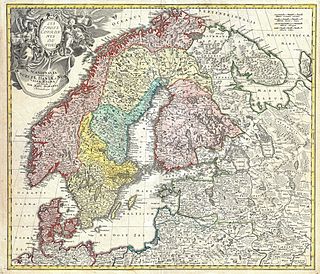
The history of Scandinavia is the history of the geographical region of Scandinavia and its peoples. The region is located in Northern Europe, and consists of Denmark, Norway and Sweden. Finland and Iceland are at times, especially in English-speaking contexts, considered part of Scandinavia.

The demographics of Minnesota are tracked by the United States Census Bureau, with additional data gathered by the Minnesota State Demographic Center. According to the most recent estimates, Minnesota's population as of 2020 was approximately 5.7 million, making it the 22nd most populous state in the United States. The total fertility rate in Minnesota was roughly 1.87 in 2019, slightly below the replacement rate of 2.1.

Human habitation of present-day Sweden began c. 12000 BC. The earliest known people belonged to the Bromme culture of the Late Palaeolithic, spreading from the south at the close of the Last Glacial Period. Neolithic farming culture became established in the southern regions around 4000 BC, but much later further north. About 1700 BC the Nordic Bronze Age began in the southern regions, based on imported metals; this was succeeded about 500 BC by the Iron Age, for which local ore deposits were exploited. Cemeteries are known mainly from 200 BC onward.
Heritable family names were generally adopted rather late within Scandinavia. Nobility were the first to take names that would be passed on from one generation to the next. Later, clergy, artisans and merchants in cities took heritable names. Family names (surnames) were still used together with primary patronyms, which were used by all social classes. This meant that most families until modern times did not have surnames. Scandinavian patronyms were generally derived from the father's given name with the addition of a suffix meaning 'son' or 'daughter' or by occupation like Møller - naming tradition remained commonly used throughout the Scandinavian countries during the time of surname formation. Forms of the patronymic suffixes include: -son, -sen, -fen, -søn, -ler, -zen, -zon/zoon, and -sson,'datter'.

Denmark–Norway was an early modern multi-national and multi-lingual real union consisting of the Kingdom of Denmark, the Kingdom of Norway, the Duchy of Schleswig, and the Duchy of Holstein. The state also claimed sovereignty over three historical peoples: Frisians, Gutes and Wends. Denmark–Norway had several colonies, namely the Danish Gold Coast, the Nicobar Islands, Serampore, Tharangambadi, and the Danish West Indies. The union was also known as the Dano-Norwegian Realm, Twin Realms (Tvillingerigerne) or the Oldenburg Monarchy (Oldenburg-monarkiet).
The Nordic diaspora may refer to:

North Germanic peoples, commonly called Scandinavians, Nordic peoples and in a medieval context Norsemen, were a Germanic linguistic group originating from the Scandinavian Peninsula. They are identified by their cultural similarities, common ancestry and common use of the Proto-Norse language from around 200 AD, a language that around 800 AD became the Old Norse language, which in turn later became the North Germanic languages of today.

There have been a variety of ethnic groups in Baltimore, Maryland and its surrounding area for 12,000 years. Prior to European colonization, various Native American nations have lived in the Baltimore area for nearly 3 millennia, with the earliest known Native inhabitants dating to the 10th millennium BCE. Following Baltimore's foundation as a subdivision of the Province of Maryland by British colonial authorities in 1661, the city became home to numerous European settlers and immigrants and their African slaves. Since the first English settlers arrived, substantial immigration from all over Europe, the presence of a deeply rooted community of free black people that was the largest in the pre-Civil War United States, out-migration of African-Americans from the Deep South, out-migration of White Southerners from Appalachia, out-migration of Native Americans from the Southeast such as the Lumbee and the Cherokee, and new waves of more recent immigrants from Latin America, the Caribbean, Asia and Africa have added layers of complexity to the workforce and culture of Baltimore, as well as the religious and ethnic fabric of the city. Baltimore's culture has been described as "the blending of Southern culture and [African-American] migration, Northern industry, and the influx of European immigrants—first mixing at the port and its neighborhoods...Baltimore’s character, it’s uniqueness, the dialect, all of it, is a kind of amalgamation of these very different things coming together—with a little Appalachia thrown in...It’s all threaded through these neighborhoods", according to the American studies academic Mary Rizzo.
Mexican immigration to Cuba comprises people who emigrated from Mexico to Cuba and their descendants. Cuba is home to the most Mexicans living in the Caribbean. The waves of migration from Mexico to Cuba started from the 1970s, attracted by a mild climate.
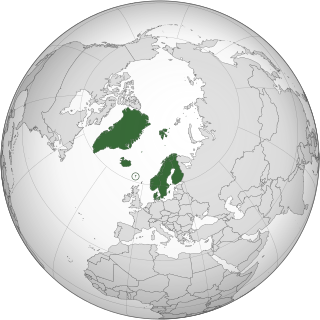
Nordic immigration to North America encompasses the movement of people from the Nordic countries of Sweden, Denmark, Norway, Iceland, and Finland to the North America, mainly the United States and Canada, from the 17th to the 20th centuries. These immigrants were drawn to the New World by factors ranging from economic opportunities to religious freedom and challenges in their native lands. Their legacy has significantly shaped the cultural, social, and economic landscape of the Americas.
